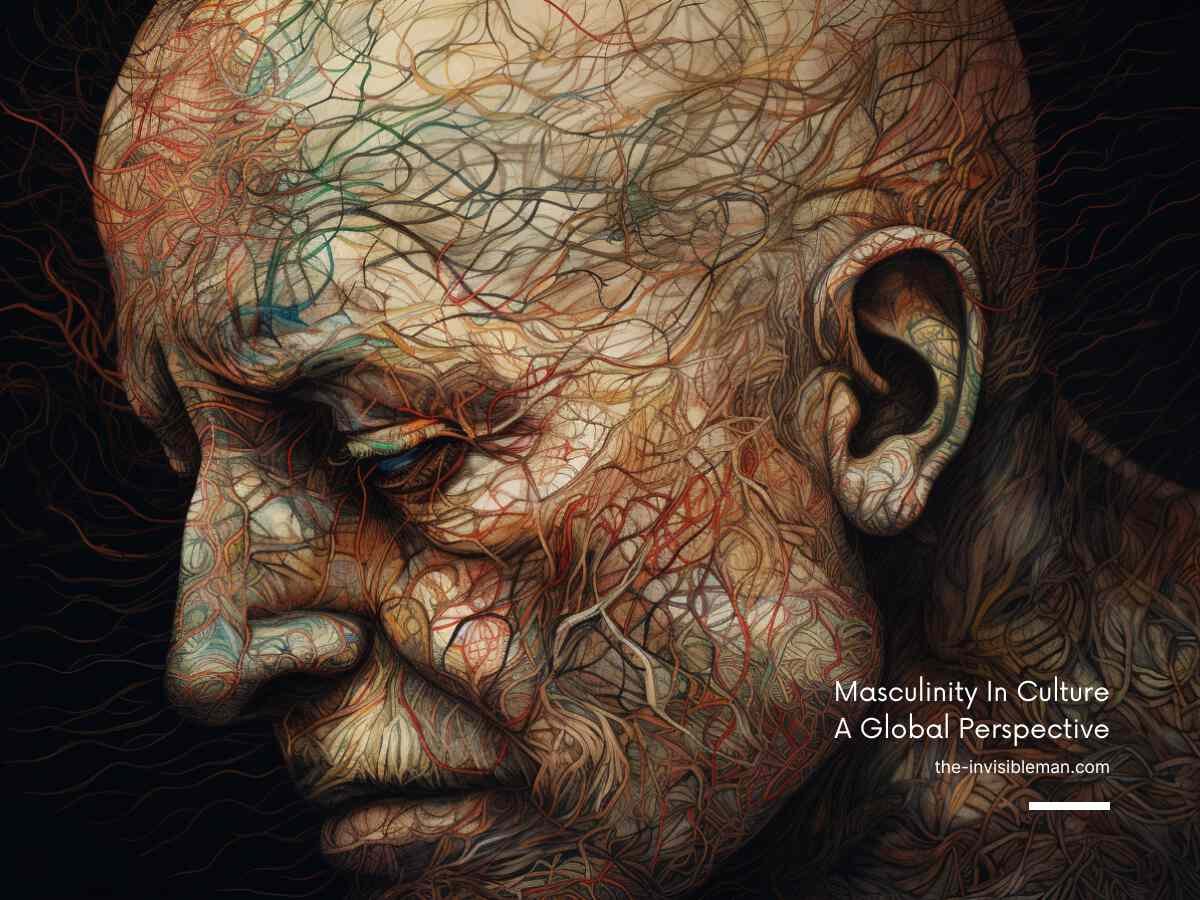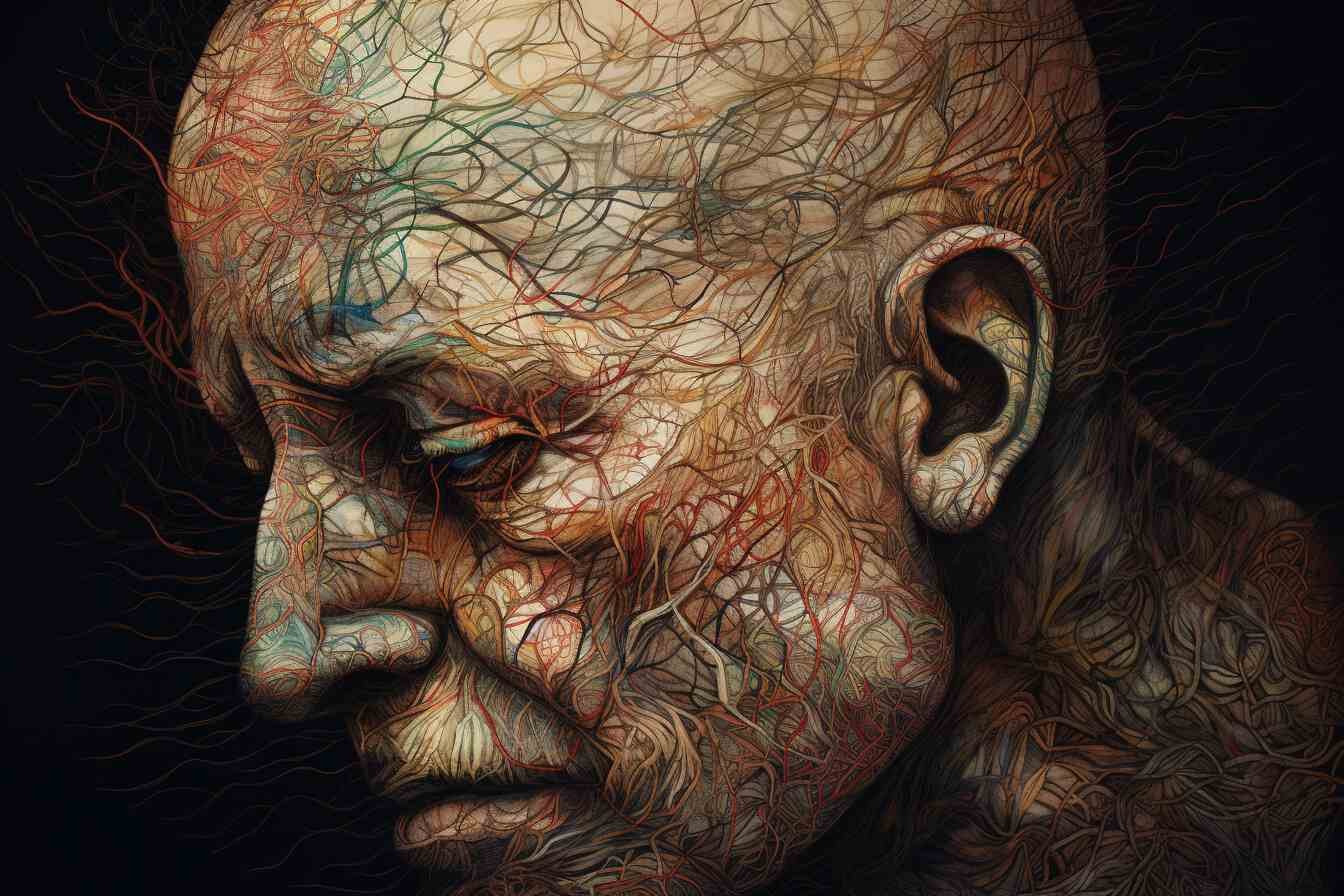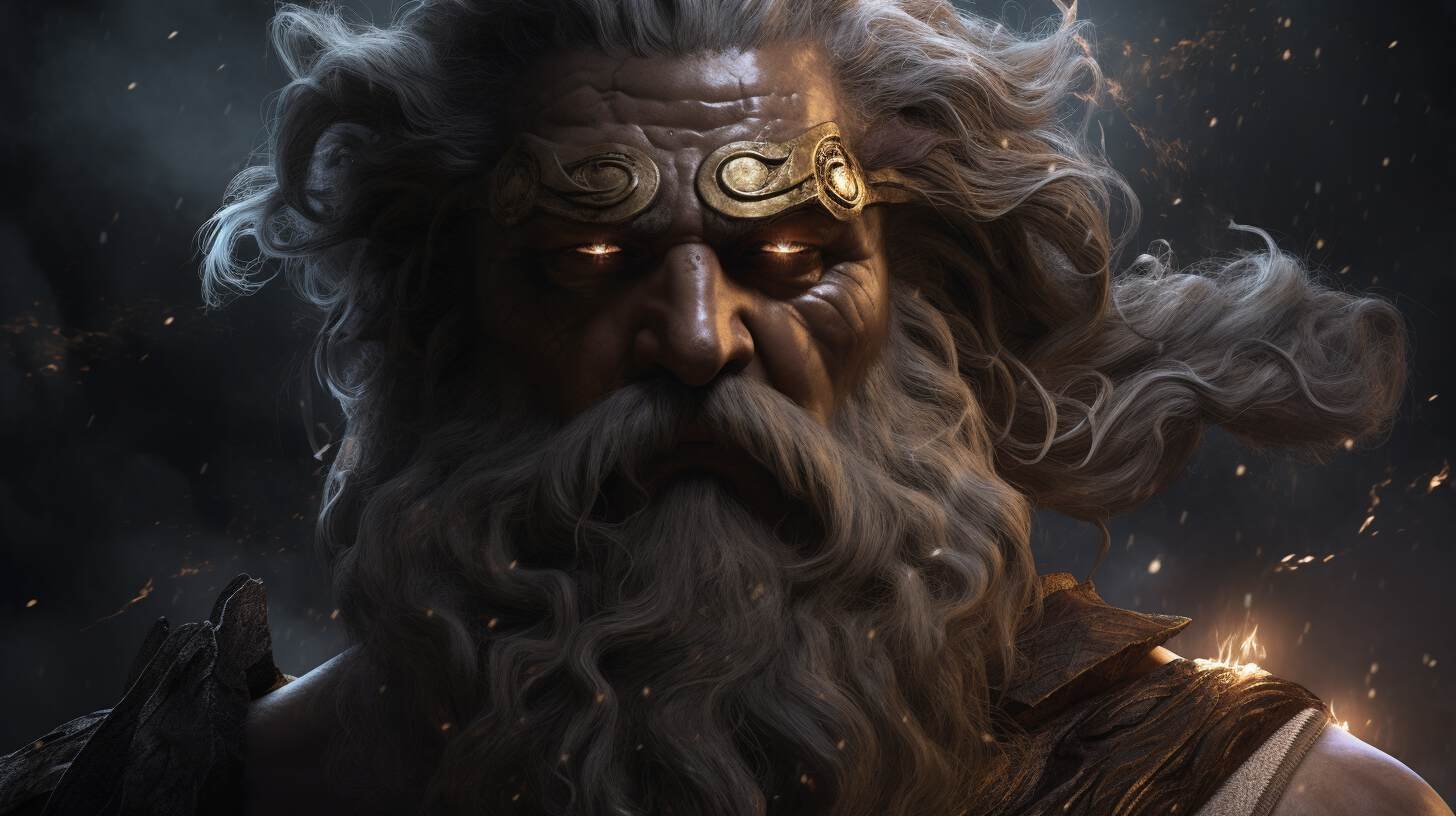Masculinity In Culture: A Global Perspective
Table of Contents Show
The definition of masculinity has been forced to adapt and evolve by the forces of culture. It is no longer a static concept, etched by nature, but rather battered into becoming a fluid idea, as mutable as the waters of a turbulent sea.
Unfortunately, as Clyde W. Franklin suggests in his book "The Changing Definition of Masculinity," is now an outgrowth of societal factors that shape male personality. It has become a construct, a product of our collective consciousness, and a reflection of our deepest fears and desires, far removed from reality.
In that sense, the memory of the modern man is being systematically rewired. The stoic, unemotional figure, the sole breadwinner, the epitome of strength and power - these are no longer the acceptable forms of masculinity.
Today, the definition of masculinity has been brute forced into a caricature, incorporating traits such as emotional over-expression, vanity, and victimhood as virtues. Men are now encouraged to over-express their feelings, and to be vulnerable. They are marketed not as signs of weaknesses, but rather a testament to the strength of character.
1. Masculinity Vs Femininity Cultural Dimension
The masculinity vs femininity cultural dimensions refers to Geert Hofstede's Cultural Dimensions Theory, which is a framework used to understand the differences in culture across countries. It further evaluates the reason why certain behaviors across various cultures are common.
What is masculinity cultural dimension?
The masculinity cultural dimension is the part of Geert Hofstede's 6-D Model of National Culture, which does not refer to the biological or physical characteristics of being male. Instead, it represents a societal preference for achievement, heroism, assertiveness, and material rewards for success. Societies that lean towards the masculine side are more competitive and driven by success.
What is femininity cultural dimension?
The opposite of Masculinity in Geert Hofstede's 6-D Model is Femininity, which stands for a societal preference for cooperation, modesty, caring for the weak, and quality of life. Feminine societies are more consensus-oriented and value quality of life over material success.
The Use Case For Masculinity Vs Femininity Hofstede's Cultural Dimensions
These dimensions are not a judgment of which is better or worse, but rather a tool to understand the underlying values and behaviors that drive a society. They can help us navigate cultural differences, improve communication, and foster better cooperation among individuals from different cultural backgrounds.
Understanding these cultural dimensions can be a powerful tool in navigating the complexities of our globalized world, whether in business, politics, or interpersonal relationships. It can help us understand why people from different cultures behave the way they do, and how we can work together more effectively despite our differences.
2. Characteristics of Masculine Culture
Masculine cultures are characterized by a number of defining traits. As mentioned above, according to Hofstede's cultural dimensions theory, these include a focus on material success, assertiveness, competitiveness, and differentiated gender roles.
Men in these cultures are expected to be assertive, competitive, and focused on material success, while women are expected to be nurturing and focused on people and quality of life.
These traits are not just abstract concepts, but tangible realities that manifest themselves in everyday life. They shape societal norms and values, influencing our attitudes, our behaviors, our relationships. They are a powerful force, a cultural tide that shapes and molds us in its image.
3. The Cultural Value of Masculinity
Masculinity, like a precious gem, holds a certain value in the cultural marketplace. It is a currency, a measure of worth, a marker of status. But its value is not fixed, not universal. It varies from culture to culture, from society to society, reflecting the diverse ways in which different cultures perceive and value masculinity.
Across cultures, the perceived value of masculinity varies greatly. In some cultures, such as Japan and the United States, masculinity is highly valued, associated with power, success, and dominance. In these cultures, men are expected to be assertive, competitive, and focused on material success.
In contrast, in other cultures, masculinity is valued differently. For instance, in many Scandinavian societies, masculinity is associated with equality and respect, with men expected to share power and responsibility with women. This is a culture that values not just strength and dominance, but also empathy, respect, and equality.
4. Masculine Culture Examples
Masculinity manifests itself in everyday life. It is in the way we talk, the way we behave, the way we interact with others. It is in our attitudes, our beliefs, our values. It is in the stories we tell, the heroes we admire, the roles we play.
In everyday life, masculinity displays itself in various ways. It is in the assertiveness of a businessman negotiating a deal, in the stoicism of a soldier on the battlefield, in the dominance of a leader commanding his troops. It is in the pride of a father teaching his son how to be a man, in the ambition of a young man striving for success, in the competitiveness of athletes pushing their limits.
It is in the way men adhere to their natural instincts to project strength and dominance in order to strive for success at all costs.
5. Masculinity in Different Cultures
Masculinity, adapts to its environment, taking on hues that blend seamlessly with the cultural landscape. It is not a universal concept, but a cultural construct, shaped and molded by the societal norms and values of a particular culture.
It shapes rituals, ceremonies, customs. It dictates roles, responsibilities, expectations. It is in the rites of passage that mark the transition from boyhood to manhood, in the rituals that celebrate masculine strength and courage, in the traditions that uphold male authority and dominance.
Masculinity in Western Culture: The Pursuit of Power and Success
The contemporary view of masculinity in Western culture is often associated with power, success, and dominance. Men are expected to be assertive, competitive, and independent. They are the leaders, the decision-makers, the ones who hold the reins of power.
However, we all know that the above is a distant memory now in light of extreme pressures on the definition of masculinity.
Masculinity in American Culture
The American masculine ideal has been traditionally associated with traits such as strength, courage, independence, leadership, and assertiveness. These traits formed the American psyche, from the rugged individualism of the frontier days to the corporate leaders of the modern era. The American man was portrayed as a breadwinner, a provider, a figure of authority and strength.
However, this ideal has been dramatically and systematically restructured. As women's labor participation, the vicious attack on masculinity, and a coordinated narrative aligning masculinity to toxicity increased, men are finding it increasingly difficult to reconfirm their status.
This shift in societal norms and expectations has sparked a polarization about the nature of masculinity and its role in society.
Masculinity in Australian Culture
The concept of masculinity in Australia, like any western society, is also in a state of flux.
There has been a systemic push to shift the traditional gender roles, with men taking on more responsibilities in the home and becoming more involved in child-rearing. This shift is challenging the stereotypical image of the Australian man as a rugged, outdoorsy individual who is emotionally stoic.
Movements like #MeToo has also had a profound impact on how men perceive their roles and behaviors, particularly in relation to women.
Is France a masculine culture?
France, according to Hofstede's cultural dimensions, has a masculinity score of 43, which is below the world average. This suggests that French society does not strictly adhere to traditional gender roles and stereotypes.
French culture values work-life balance, quality of life, and care for the weak. While competition and achievement are appreciated, they are not the overriding principles of societal conduct.
The French are known for their appreciation of good food, good wine, and leisure time, all of which are indicative of a culture that values enjoyment of life over aggressive competition and accumulation of wealth.
Is Germany a masculine culture?
Germany, as per Hofstede's cultural dimensions, has a masculinity score of 66, which is significantly higher than the world average. This indicates that the German society is driven by competition, achievement, and success, where the 'winner' is the one who is best in the field. This is a value system that starts in school and continues throughout one's career.
The German society is characterized by a clear distinction between gender roles, where men are supposed to be assertive, tough, and focused on material success, while women are expected to be more modest, tender, and concerned with the quality of life.
Masculinity in Japanese Culture
In Japan, the concept of masculinity is deeply intertwined with the societal role of the "salaryman". This term refers to a man who is wholly devoted to his company, often at the expense of his personal life and health. The salaryman is expected to work long hours, participate in after-work social activities with colleagues, and prioritize the needs of the company above all else.
However, this traditional model of masculinity is being challenged and reshaped in contemporary Japan. The economic downturn of the 1990s, often referred to as the "Lost Decade", led to widespread job insecurity and unemployment, which undermined the stability and prestige of the salaryman role. At the same time, younger generations are increasingly rejecting the demanding work culture and seeking a better work-life balance.
Furthermore, the rise of diverse representations of masculinity in popular culture, such as the "herbivore men" (men who are not interested in dating or marriage) and the "ikemen" (attractive men), reflect changing attitudes towards masculinity and gender roles in Japanese society.
Despite these changes, the salaryman ideal still exerts a powerful influence on Japanese men and shapes their experiences of masculinity. For example, men who do not conform to this ideal may face social stigma and discrimination, which can lead to mental health issues and social isolation.
Masculinity in Eastern Cultures: The Balance of Strength and Wisdom
In contrast, Eastern cultures often emphasize a balance between strength and wisdom in their conception of masculinity. Men are expected to be strong, yes, but they are also expected to be wise, to be thoughtful, to be emotionally intelligent. The Confucian tradition of scholar masculinity, shared by many East Asian cultures, is a testament to this. It is a culture that values not just physical strength, but also mental strength, emotional intelligence, and wisdom.
Masculinity in Chinese Culture
In Chinese culture, the concept of masculinity is both complex and deeply rooted in historical and societal norms. The traditional Chinese man is often portrayed as a paragon of strength, stoicism, and familial responsibility. This image, however, is not a monolith but rather a multifaceted construct that varies across different regions, social classes, and generations.
The Chinese term for masculinity, "nanxing," is often associated with attributes such as physical strength, courage, and the ability to protect and provide for one's family. These traits are deeply ingrained in the societal fabric, with roots tracing back to Confucian ideals that emphasize the man's role as the head of the household.
However, the modern era has seen a shift in the perception of masculinity in Chinese culture. The rise of pop culture icons, such as pop stars and actors, who embody a softer, more emotionally expressive form of masculinity, has challenged traditional norms. This phenomenon, often referred to as "xiao xian rou" or "little fresh meat," has gained significant traction, particularly among younger generations.
The influence of Western culture and globalization has also played a role in shaping the concept of masculinity in Chinese society.
Masculinity in Indian Culture
The concept of masculinity in Indian culture is rich with threads of tradition, religion, and societal norms. It is a concept that has evolved over time, influenced by historical events, cultural shifts, and the impact of globalization.
In India, masculinity is often associated with strength, courage, and the ability to protect and provide for one's family. These traits are deeply ingrained in the societal fabric, with roots tracing back to ancient scriptures and epics like the Mahabharata and Ramayana, where the male protagonists are depicted as valiant warriors and wise kings.
However, the concept of masculinity in Indian culture extends beyond physical strength and bravery. It is also closely tied to the notion of duty or "dharma." Men are expected to uphold their responsibilities towards their families and society, a concept that is deeply rooted in the caste system and the division of societal roles.
The influence of colonial rule and Western culture has shaped the perception of masculinity in Indian culture. The introduction of Western education and ideals during British rule brought about a shift in the societal perception of masculinity, with a greater emphasis on intellectual prowess and economic success.
In recent years, the concept of masculinity in Indian culture has been challenged and redefined. The rise of feminist movements and the increasing visibility of LGBTQ+ communities have brought about pressures on suppressing the positive ideals of masculinity. However, traditional norms and expectations continue to naturally resist, but often at a cost of conflict between traditional and modern values.
Masculinity in African Cultures: The Intersection of Tradition and Modernity
African cultures, on the other hand, offer a unique perspective on masculinity. Here, masculinity is often associated with bravery, nobility, emotional intelligence, and strength. Men are expected to be courageous, noble, emotionally intelligent, and strong. They are the protectors, the providers, the pillars of the community.
But this traditional view of masculinity is not static. It is evolving, adapting to the changing times, to the shifting societal norms and values. It is at the intersection of tradition and modernity, a testament to the dynamic nature of culture and masculinity.
6. Masculinity in Business Culture
Business is a domain where the concept of masculinity is both tested and defined. It is a world that has traditionally been dominated by men, and as such, the traits that are valued and promoted within this sphere often align with traditional notions of masculinity.
In the corporate world, masculinity is often associated with masculine traits. Men are expected to be decisive, to take risks, and to prioritize their careers above all else. This is a reflection of the broader societal expectation that men should be providers, a role that requires financial success and professional achievement.
Unfortunately, in recent years, there has been a shift in the perception of masculinity in business culture. The rise of movements advocating for gender equality and mental health awareness has challenged norms and forced a restructuring of masculinity under the guise of addressing toxicity.
Toxicity after all has existed since the dawn of our existence, and is not just a masculine adjective. Rather than address toxicity, societies decided to castrate masculinity.
7. Masculinity in Pop Culture
Pop culture, a powerful force in shaping societal norms and perceptions, has a significant influence on the concept of masculinity. It is a platform where traditional notions of masculinity are both reinforced and challenged, and where new expressions of masculinity are born.
In pop culture, masculinity has moved from the "action hero" archetype, characterized by physical prowess and a willingness to face danger, to sitcom style heroes who exhibit a flippant and often a goofy character.
The music industry, too, played a significant role in shaping perceptions of masculinity. From the rebellious rock stars of the 60s and 70s to the emotionally expressive singer-songwriters of today, musicians have taken on to the bandwagon as well.
8. What Cultures Are High in Masculinity?
In global cultures, some threads are woven with a heavier hand, their patterns dominated by the bold strokes of masculinity. These are cultures high in masculinity, where the masculine ideal is not just a standard to aspire to, but a defining feature of the culture itself.
In cultures high in masculinity, such as Japan, which holds the world's highest masculinity rating of 95 according to Hofstede's Masculinity Index, masculinity is not just a trait, but a way of life. It is a societal norm, a cultural expectation, a defining characteristic of the culture itself.
Similarly, other cultures such as the United States, Mexico, and China also score high on the masculinity index, reinforcing the dominance of masculinity in their societal norms and values.
9. What is Toxic Culture of Masculinity?
Toxicity is not confined to masculinity alone. Both masculinity and femininity can be corrupted, leading to harmful behaviors, attitudes and an overall toxic culture of masculinity or femininity. Such a toxic culture emphasizes the worst aspects of stereotypically masculine and feminine attributes.
In essence, both toxic masculinity and femininity cultures are represented by traits such as aggression, dominance, emotional illiteracy, entitlement, and hostility to the opposite gender. These versions of masculinity and femininity are seen as “toxic” for two reasons.
First, they perpetuate harmful stereotypes and norms that can be detrimental to men, women, and society as a whole.
Second, they force men and women into under-appreciating the individual qualities of each gender and their coherent utility .
The toxic culture manifests itself in primarily one way, and that is the devaluation of the opposite gender.
10. What is Masculinity in Today's Society?
In today's society, the concept of masculinity is undergoing a seismic shift. It is being forced to evolve, change, and adapt to the currents of societal pressures. In the present day, the traditional notions of masculinity, characterized by strength, assertiveness, and positive dominance are no longer acceptable.
While the intent was to balance strength with sensitivity, assertiveness with empathy, dominance with respect, the effect has been exactly the opposite. It has polarized men into pursuing hyper-masculinity or the other extreme of submissive masculinity.
Masculinity already stood for chivalry, honor, strength, benevolence and responsibility. The problem in that sense has never been with masculinity per se, but with the toxic behaviors that are often associated with it.
There was a severe need to prosecute irresponsible, harmful and repressive regimes and individuals, but not masculinity as a whole. This small group did not represent masculinity and rather than focus on demonizing masculinity as a remedy, we should have promoted those regimes and individuals who exemplified holistic masculinity as the model.
11. Which country has the most masculine culture?
According to the Hofstede Insights Cultural Dimensions model, which measures cultural dimensions including masculinity, Japan is often considered one of the countries with the most masculine culture.
Japanese society places great emphasis on hierarchy, group harmony, and the pursuit of success. The cultural norms in Japan often value assertiveness, competition, and dedication to work.
However, determining which country has the most masculine culture is a complex and subjective task, often biased because of the perceived notions of masculinity in that culture.
12. Which country has the lowest masculinity?
Nordic countries often stand out for their diverse views and policies. Sweden, in particular, is known for its egalitarian approach to gender roles. According to the World Economic Forum's Global Gender Gap Report, Sweden ranks among the top countries for gender equality, a testament to its low emphasis on traditional masculinity.
The country's policies and societal norms encourage a balanced distribution of roles and responsibilities, irrespective of gender. This is reflected in its high female labor force participation, shared parental leave, and the prevalence of women in leadership positions.
13. What do masculine cultures believe?
Masculine cultures, as defined by Geert Hofstede's cultural dimensions theory, are characterized by a preference for achievement, heroism, assertiveness, and material rewards for success.
They tend to emphasize traditional gender roles, with men expected to be assertive, tough, and focused on material success, while women are expected to be more modest, tender, and concerned with the quality of life.
Masculine cultures value competition and power, and they often reward individuals for their successes and achievements. Countries like Japan, Hungary, and Austria are examples of masculine cultures.
14. Conclusion
The role of masculinity has always been cast as the villain, the brute, the oppressor. This narrative, however, is a gross oversimplification, a caricature painted with broad strokes of prejudice and ignorance. It is a narrative that fails to acknowledge the complexity and diversity of masculine expression, and the essential role it plays in human existence.
We cannot deny that it is, like any other force, harnessed for good or ill, a power that can build civilizations or tear them down.
Hence, the demonization of masculinity is not just an attack on half the population; it is an attack on the very fabric of our society. It is an attempt to unravel the intricate tapestry of human interaction, to sever the threads that bind us together in mutual respect and understanding. It is a dangerous game, a high-stakes gamble with the future of our species.
Finally, we must resist the temptation to scapegoat masculinity, to blame it for all the ills of the world. Instead, we must strive to understand it, to appreciate its strengths and address its weaknesses.
We must recognize the value of masculine virtues such as courage, resilience, and protectiveness, while also challenging the toxic behaviours that can arise when these virtues are distorted or perverted.



























